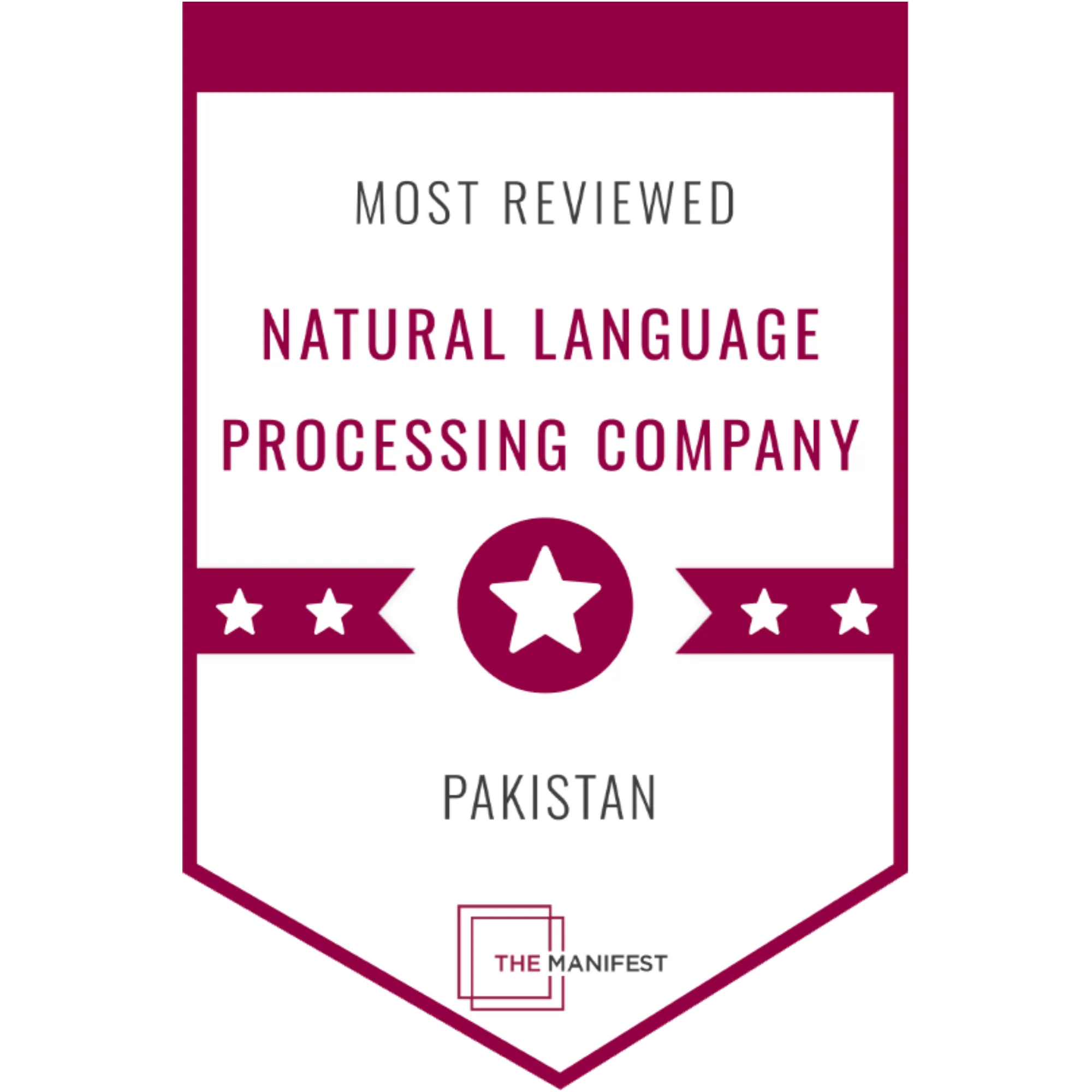From Sweat to Success: The Game-Changing Role of AI Wearables in Athlete Recovery

Contents
In sports, pushing the boundaries of physical performance and achieving peak athletic potential is the ultimate goal. However, intense training sessions and competitions often take a toll on an athlete’s body, leading to fatigue, injuries, and longer recovery times. To address these challenges, the integration of Artificial Intelligence (AI) and wearable technology has emerged as a game-changer in athlete recovery.
This blog explores the remarkable advancements and the transformative role of AI wearables in optimizing athlete recovery. We delve into the seamless AI integration, machine learning, and wearable sensors to create personalized recovery plans, analyze sleep patterns, provide hydration recommendations, measure stress levels, and more.
The Challenges:
According to the last research conducted in 2023, traditional methods of monitoring and optimizing athlete recovery have been limited in their effectiveness. Statistically:
- Less than 30% of athletes reported using objective measures to monitor recovery, such as heart rate variability or blood markers.
- Only 47% of NCAA Division 1 college athletes reported receiving nutritional counseling from their respective institutions, which is essential for optimizing post-exercise recovery.
- Over 90% of athletes reported inadequate sleep, which can negatively impact recovery and lead to fatigue-related injuries.

These challenges demonstrate the need for more precise, data-driven recovery methods. Fortunately, AI-powered wearables are making this possible by providing real-time insights into the body’s vital signs, recovery metrics, and more. These tools enable coaches and athletes to develop optimized recovery plans that are tailored to the individual, which can help athletes recover faster, remain injury-free, and perform at their optimal level.
Sports and AI – The Innovative Solution:
The advancements made in AI technology have provided numerous benefits to the world of sports. From helping athletes improve their performance to enabling better engagement with fans, these technological advancements have transformed the way we approach sports. We can expect even more profound changes and improvements in the future, ultimately benefiting athletes, teams, leagues, and fans alike. Here are some recent advancements in the field of sports and AI:
AI-Enabled Wearables:
AI-powered wearables have revolutionized sports performance and injury prevention. The technology of sports and AI collect vast amounts of real-time data about the athlete, from heart rate variability and blood markers to the body’s vital signs and recovery metrics. This data is used by coaches and staff to monitor player performance, prevent injuries, and optimize athlete recovery.
Computer Vision:
Computer vision is another transformation in the world of sports and AI. Computer vision software can be used to track and analyze the movement of players in real-time. This technology is commonly used to analyze team formations, strategy, and player movements, enabling coaches to create more effective game plans and strategies.
AI-influenced Fan Experience:
AI has also influenced the fan experience by enabling better personalization and engagement. FANAI, a sports analytics firm, uses AI algorithms to help teams and leagues track fan behavior and preferences, creating personalized engagement strategies. This helps teams attract and retain fans and generate more revenue from ticket sales, merchandise and advertising deals.
Predictive Analytics:
Predictive analytics is another powerful tool in sports and AI. By analyzing vast amounts of data, such as player statistics, injury and medical records, weather conditions, and more, predictive analytics can help teams predict match outcomes, optimize their game strategies, and plan for events such as potential injuries or game cancellations.

The Role of Machine Learning in Sports:
Machine learning, a subset of AI, has emerged as a game-changer in the world of sports. With its ability to analyze vast amounts of data and uncover patterns, machine learning has revolutionized various aspects of the sporting industry.
Advanced Performance Analytics:
Machine learning in sports can process large volumes of performance data, including player statistics, biometrics, and game footage. Coaches and analysts can gain valuable insights into player performance, strategies, and patterns through this data. For example, machine learning models can identify patterns in player movements and highlight areas for improvement, helping coaches make data-driven decisions to enhance team performance.
Injury Prediction and Prevention:
Machine learning in sports can analyze athletes’ historical data, including injury records, training loads, and biomechanics, to predict the likelihood of future injuries. By monitoring various risk factors, teams can implement proactive measures to prevent injuries, adjust training programs, and optimize players’ performance and longevity. This approach not only minimizes the chances of injuries but also maximizes athlete availability on the field.
Sports Betting and Predictive Analytics:
The integration of machine learning and AI in sports betting has gained immense popularity. Machine learning algorithms can analyze vast amounts of historical and real-time data, including team and player statistics, weather conditions, and betting trends, to make accurate predictions. This has led to more informed decision-making for sports bettors and bookmakers, resulting in a significant impact on the sports betting industry.
Fan Engagement and Personalization:
Machine learning in sports have transformed the fan experience by enabling personalized AI content recommendation and engagement strategies. Machine learning algorithms can recommend tailored content, promotions, and personalized offers by analyzing data about fan preferences, behavior, and social media activity. This enhances the fan experience, fosters a sense of community, and builds strong connections between fans and their favorite teams or athletes.
Automated Video Analysis:
Machine learning in sports can automate the analysis of game footage, saving valuable time for coaches and analysts. By detecting and tracking player movements, recognizing specific plays or patterns, and tagging key events, machine learning systems can generate valuable insights from video data. This allows teams to study opponents, review their own performance, and develop effective strategies for future games.
AI Wearables – Optimizing Athlete Recovery:
AI wearables are the latest development in athlete recovery, allowing for a more personalized and data-driven approach to recovery management. These devices measure various physiological metrics, including heart rate, sleep patterns, hydration levels, and muscle fatigue, to provide real-time insights into athletes’ recovery progress.
Artificial intelligence algorithms then analyze this data, providing coaches and medical staff with actionable information on how to optimize recovery based on individual needs. These wearables also allow for remote monitoring, enabling medical staff to keep track of athletes’ progress outside the typical clinical setting. This provides more comprehensive insights into athletes’ recovery and helps to identify any potential concerns or issues before they become critical.
AI wearables enable more individualized recovery plans based on athletes’ specific needs. With this data-driven approach, teams can tailor recovery programs for each athlete, optimizing the recovery process and ensuring that athletes return to peak performance as quickly and safely as possible.
They represent a significant advancement in athlete recovery, providing coaches and medical staff with real-time, data-driven insights into athletes’ recovery progress. With continued advancements in technology and access to vast amounts of data, we can expect this technology to become increasingly sophisticated and play an even more significant role in athlete recovery management in the years to come.
Sports Wearables – Using Sensors and Algorithms:
The technology stack used for sensors and algorithms in sports wearables typically involves a combination of hardware and software components. Here is a general breakdown of the technology stack:
Sensors:
Wearable devices incorporate various sensors to collect physiological data. These sensors can include:
- Accelerometers: Measure movement and acceleration.
- Gyroscopes: Monitor orientation and rotation.
- Heart Rate Monitors: Measure heart rate and heart rate variability.
- Thermometers: Capture body temperature.
- Electrocardiogram (ECG) sensors: Record electrical activity of the heart.
- Pulse Oximeters: Measure blood oxygen saturation levels.
- GPS: Track location and distance covered.
Microcontrollers/Processors:
This hardware component is responsible for processing and analyzing sensor data. Microcontrollers such as ARM Cortex-M series or specialized low-power processors are commonly used for sports wearables.
Communication Protocols:
To transmit data from wearables to external devices or cloud platforms, communication protocols like Bluetooth Low Energy (BLE) or Wi-Fi may be utilized.
Data Storage and Processing:
Collected sensor data is typically stored in memory or transmitted to cloud platforms for further processing. Cloud infrastructure, data warehouses, or databases are utilized to store, manage, and analyze large amounts of data.
Algorithms and Machine Learning:
Advanced algorithms and machine learning techniques are used to analyze sensor data and extract meaningful insights. These algorithms can include signal processing, pattern recognition, and predictive analytics, and ultimately enhance the role of AI in fraud detection and anomaly detection.
Mobile or Web Applications:
User-friendly applications are developed in sports wearables to display and interpret the collected data. These apps provide real-time feedback, personalized recommendations, and visualizations to athletes, coaches, and medical staff.
The actual technology stack used can vary based on the specific wearable device and its intended functionality. Manufacturers and developers may opt for different combinations of hardware, software frameworks, and communication protocols based on their design goals and requirements.
Benefits of AI Wearables:
Sports wearables offer a range of benefits for athletes, coaches, and medical staff. Here are some of the key benefits:

Personalized Recovery Plans:
Athletes’ recovery requirements can vary vastly based on factors such as age, training load, injury history, and other physiological characteristics. Wearables provide personalized insights into athletes’ progress, allowing coaches and medical staff to optimize recovery plans based on individual needs.
Objective Data:
Traditional recovery methods rely on subjective feedback from athletes, which can be unreliable. They provide objective, data-driven insights that remove uncertainty and help coaches make informed decisions.
Real-Time Monitoring:
Provides real-time insights into athletes’ recovery progress, enabling early identification of potential issues and timely interventions when necessary.
Remote Monitoring:
Athletes’ recovery progress can be monitored remotely, allowing medical staff to track progress outside of the typical clinical setting.
Injury Prevention:
It can alert athletes and coaches to potential injury risks by monitoring factors such as overall workload and biomechanical movements. Early intervention can help prevent injuries before they occur.
Improved Performance:
Optimized recovery plans can help athletes return to peak performance quickly and safely, improving overall athletic performance.
The Future of Wearable Tech in Sports:
Sports wearables are revolutionizing the world of sports, providing athletes with valuable insights and enhancing their performance. Let’s explore some statistical data that highlights the significance of wearable tech in the future of sports:
Market Growth:
The global market for wearable sports technology is expected to reach $34.72 billion by 2025, growing at a compound annual growth rate (CAGR) of 15.9% from 2020 to 2025. This indicates the increasing adoption and demand for wearable tech in the sports industry.
Fitness Tracking Devices:
Fitness trackers, such as smartwatches and activity trackers, have gained immense popularity. By 2025, the global smartwatch market will reach 116.9 million shipments. These devices track steps and calories burned, monitor heart rate, and sleep patterns, and provide personalized workout recommendations.
Athlete Performance Monitoring:
Wearable sensors embedded in sports equipment and clothing generate a wealth of data, allowing coaches and athletes to monitor performance metrics in real time. According to a survey, nearly 80% of professional sports teams use wearable sensors for performance tracking and injury prevention.
Injury Prevention:
Wearable tech plays a crucial role in reducing the risk of injuries among athletes. For example, smart compression garments with embedded sensors analyze biomechanics and muscle activity, providing valuable feedback to prevent overuse injuries. This technology has shown a 45% reduction in the risk of injuries.
Virtual Reality (VR) Training:
AI in Metaverse and VR technology is integrated into sports training programs, providing athletes with immersive experiences and simulated environments. Statistics show that VR training can enhance performance by up to 30%, as athletes can practice scenarios and improve decision-making skills in a controlled setting.
Smart Stadiums:
Wearable tech extends beyond athletes to enhance the fan experience. Smart stadiums equipped with sensors and beacons offer personalized services, real-time stats, and interactive experiences for spectators, creating a more engaging and immersive environment.
These statistics indicate the rapid growth and immense potential of wearable tech in sports. As technology continues to evolve, we can expect even more innovative applications and advancements in the future, revolutionizing the way athletes train, perform, and connect with fans.

Conclusion:
The integration of AI and wearable technology has undeniably revolutionized athlete recovery. By providing real-time, data-driven insights into athletes’ bodies, AI wearables empower coaches and medical staff to implement generative AI in healthcare and create personalized recovery plans, optimize performance, and prevent injuries.
As wearable technology continues to evolve and integrate with machine learning algorithms, we can expect even more sophisticated applications in the future. Imagine a world where technology not only monitors recovery but also predicts potential issues and recommends preventative measures. This future holds immense potential for athletes to achieve peak performance, stay injury-free, and extend their careers.
The impact of sports wearables extends beyond athletes, transforming the way teams operate and fans experience sports. With access to a wealth of data, teams can make data-driven decisions, optimize training programs, and gain a competitive edge. For fans, wearable tech can create a more personalized and interactive experience, fostering a deeper connection with their favorite athletes and teams.
The future of sports is undoubtedly driven by data and innovation. AI in sports is at the forefront of this revolution, entering in a new era of athlete recovery, performance optimization, and a more data-driven approach to the entire sports ecosystem.
























